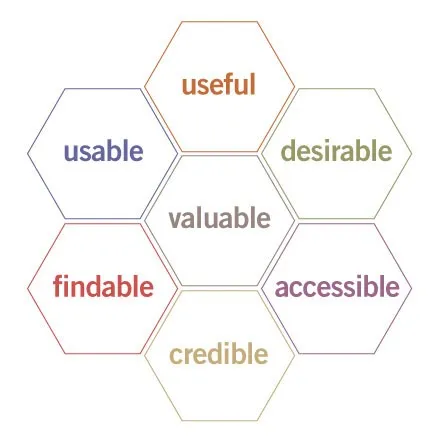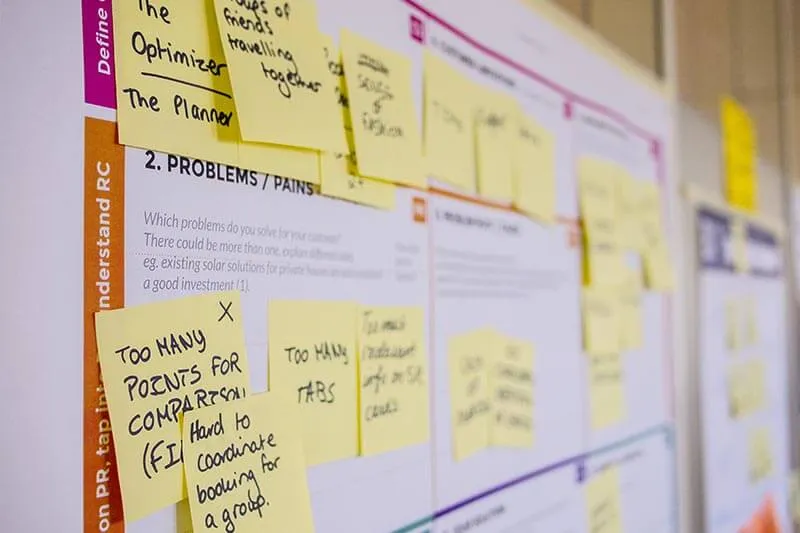The Twelve Days of User Onboarding

It’s that time of year again! Personally, I can’t wait for sounds of blissful chatter, gentle snowfall, and a crackling fireplace to fill the room… cue the “Christmas at Hogwarts” music!
During this time, festive parties take over our calendars, we share appreciation posts on social media, and we give thanks around the dining table. All of this fosters a holiday season flushed with emotions of belonging, warmth, hospitality, and compassion.

All these fuzzy thoughts got me thinking…
How can a company implement these warm holiday gestures into their core values and onboarding processes?
Too much of a stretch? C’mon guys, I work for a SaaS company! These types of thoughts have even infiltrated my nightly dreams.
But, the more you think about it… this question isn’t really that far-fetched.
User Onboarding is quite similar to hosting a holiday party. The host, like a company onboarding a new client, goes through many measures to ensure their guests are catered to, comfortable in a new setting, and understand how the night will proceed.
This is why I’ve decided to break down The 12 necessary traits for successful User Onboarding with a holiday twist.
So sit back, warm yourself up a cup of Glühwein (German mulled wine), and feel free to hum the rest of this article to the tune of the classic carol “The Twelve Days of Christmas”!
Table of Contents
On The First Day of User Onboarding, My Product Manager Gave To Me…
One Great User Experience
The user experience (UX) is the most essential feature of your product and, by extension, your user onboarding process. This is how your users will come to know your company and determine whether you can help them achieve their goals.

Truly understanding the user experience your product provides means identifying who your user is and their:
- capabilities
- limitations
- desires
If you can do this, you can focus on the best methods and means for onboarding them.
You’re product’s UX should fulfill every facet of the User Experience Honeycomb. Define the priorities of your platform with this as an aid, and start focusing on specific features your product excels at.

For instance, does your product aim to be the most accessible, or the most desirable in the market?
A simple UX will facilitate the decision making process where your user decides whether or not they will return to your platform, which can directly translate into retention (woo!!) or churn (boo!)
On The Second Day of User Onboarding, My Product Manager Gave To Me…
Two Inspiring “Aha!”s
The user should be able to determine the value your product provides right away. Additionally, this value should be unique to your product and set you apart from the competition.
The “Aha!” moment is the exact instance your user decides whether or not they will return to your platform.
Strategically sprinkling “Aha!” moments throughout your onboarding process, like gumdrops on a gingerbread house (the only cheesy holiday reference i’ll make, promise!) leads to retained users who will actually take action.

Of course, ensuring your product has multiple “Aha!” moments throughout the onboarding process can do wonders for retention and reducing churn.
But, what you should really focus on is how you can structure “Aha!” moments to be specific, measurable, and early in the user experience funnel.
Companies often have a hard time figuring out where their “Aha!” moment is. But, if you follow these steps:
- Develop a retention hypothesis
- Determine the best actions that lead to the highest user retention
- Test this hypothesis with behavioral cohorts
You can secure your special moment and lock in lifelong successful users.
On Third Day of User Onboarding, My Product Manager Gave To Me…
Three Accomplished Tasks
I can’t stress how important it is to keep your users motivated during the onboarding process. One of the best ways to do this is by having them accomplish tasks early within your platform.
Encouraging your user with small successes early on can ultimately lead to a greater lifetime value of the customer.
- This is why Quora makes you follow a certain number of topics when you first sign up. They successfully onboard you to structure a newsfeed that features only the specific topics you are interested in!
Users are more likely to return to your platform when they feel good about themselves and what they’ve accomplished!

Brush up on some ways you can implement user psychology into your UI and onboarding process. By understanding how your designs are perceived, you can make help your user achieve their goals more effectively.
On The Fourth Day of User Onboarding, My Product Manager Gave To Me…
Four Follow-ups
Following up with your user as they progress through your platform and complete critical steps is an essential component of lead nurturing.
Frequently providing your customers with helpful information throughout their customer journey will develop knowledgeable users and empower them to proceed with your platform.

When you cultivate the relationship with your current users and listen to the needs of a prospective audience, you find a way to address specific answers to your customers and provide a great customer experience.
40-60% of users who sign up for SaaS applications never come back.
You can combat this drop off with an email lead nurturing campaign that focuses in one of these 10 campaign areas:
welcome, newsletter, event, product or feature focused, onboarding, testimonial, re-engagement, follow-up, feedback, or wrapping up… (no, not wrapping presents, silly!)
On The Fifth Day of User Onboarding, My Product Manager Gave To Me…
Five Converted Users
One of the key ways to identify how well your onboarding processes work is by analyzing your trial-to-paid customer conversion rate.
If you can keep a user active within your SaaS for at least three days, they are four times more likely to convert.
Along with other onboarding tactics you should immediately implement to secure this 4x conversion rate, extending the trial period is oftentimes the way to go.

Users that churn right after trial should be invited to experience a longer trial and provide feedback.
This invaluable insight will provide your SaaS business with the information to onboard new users better and convert customers in the future.
On The Sixth Day of User Onboarding, My Product Manager Gave To Me…
Six Major Features
Present the big bucks during user onboarding first, then let your users stumble upon the loose change!
When you present all the smaller features of your product or service too soon, users become overwhelmed and are more likely to exit your software in search of answers.

Right away, this should raise red flags within your onboarding process.
With every added instance your user leaves your platform, the probability that they don’t return increases.
One way to approach this dilemma during onboarding is to providing a user-friendly sign up form that is action-oriented, rather than instructive.
- If credit card information isn’t necessary right away, forgo it and task users with completing essential tasks, like filling out their emails, instead!
On The Seventh Day of User Onboarding, My Product Manager Gave To Me…
Seven Set Expectations
Your user onboarding process should be as up-front and transparent as possible.
Let your users know what they can come to expect of your product and what they stand to gain by using your service.
Set your expectations high, but quickly show how easily they can be achieved.
One way you can do this is by implementing a software navigation system on top of your own software, which provides step-by-step guided walkthroughs.
If your company can set the expectation of providing always available and assisted guidance, the user will will feel secure in their capabilities and will want to return to your platform!
On The Eighth Day of User Onboarding, My Product Manager Gave To Me…
Eight Customer Journeys
The customer journey is a life cycle defined by user touchpoints that begin even before user onboarding.
The first onboarding touchpoints are the instances a user first experiences your product and are responsible for the retention-fueling, churn–fighting first impression that is so important!
Take Milly, for example:
Milly hosts a holiday party, but forgets to send out her invitations. These invites would have been the first touchpoint in the party onboarding journey. She completely overlooked this step and failed to properly provide her guests with the time, date, and place of the party. Now Milly has to finish all the fruit cake by herself. Don’t be a Milly!

Keep in mind, a customer can jump from different touchpoints throughout the customer journey, quite like a bumblebee’s flight path. They don’t always follow the predictable procedure, but one thing is always certain: they will encounter the onboarding process. So make sure you guide them to arrive at Milly’s on time!
Remember too, that users come from different places and have different backgrounds and expectations. Make sure you can segment your users and personalize their onboarding experience.
On The Ninth Day of User Onboarding, My Product Manager Gave To Me…
Nine Adaptations
Your company should be able to respond to customer concerns and resolve issues quickly.
Hopefully, your SaaS business will have to successfully onboard millions of customers that possess a dissimilar and vast skill set. For instance, some users won’t want to accomplish certain tasks that are needed in order to become successful.
This is why it’s so important your company can easily adapt to different user expectations and balance the user experience of onboarding with necessary steps, such as creating an account.
Addressing and resolving a user’s concern during onboarding can be easily resolved with a virtual assistant.
On The Tenth Day of User Onboarding, My Product Manager Gave To Me…
Ten Case Studies
Case studies communicate to users how you’ve helped other people in the past, and how you will provide the same sort of assistance to them now.
Effective case studies covering user onboarding should focus on the user’s understanding of the product, software, or service at the end of their journey.
Did they feel a welcome email was needed? Did the guided walkthroughs really help? Are users more engaged after you’ve updated onboarding tactics?
I don’t know about you, but I like to be reminded that I made the right move every time I commit to a decision.
Case studies can be decisive pieces of information you send out to trial users to convince them that they’re making the right decision.
On The Eleventh Day of User Onboarding, My Product Manager Gave To Me…
Eleven Proactive Measures
Product Managers should revisit their product or software regularly to understand the sorts of issues customers may face amidst their first interaction.

This is a proactive customer success tactic that aids the user onboarding process.
Once a user signs up for your product, they should be able to quickly set up their account and working environment to immediately achieve some results.
When users can’t accomplish a task, they are forced to abandon the platform and look for help in online forums, FAQ sites, video tutorials, etc.
That’s why the very people who’ve designed the product and know it best should work to weed out any occurrence of frustration and guide users in real time.
If you can pinpoint every occasion thwarting your customer’s potential to progress through your product, you’ll create an easier journey for them to follow and a way happier customer in the end!
On The Twelfth Day of User Onboarding, My Product Manager Gave To Me…
Twelve Delighted Customers
If you implement these key measures into your current user onboarding process, you’ll end up with the perfect present this holiday season: delighted customers!

Delighted customers will advocate on behalf of your brand and boast about how easy your product is to use. Help share this message with a helpful onboarding process utilizing every trait previously discussed!
Holiday Cheer and Happy Customers
Thanks so much for taking the time to go caroling with me! But before you go, let’s quickly review each necessary user onboarding trait one last time. After all, isn’t it Santa Claus who makes a list and checks it twice?
♪♫♬… On the First Day of User Onboarding, My Product Manager Gave To Me
One Great User Experience
Two Inspiring “Aha!”s
Three Accomplished Tasks
Four Follow Ups
Five Converted Users
Six Major Features
Seven Expectations
Eight Customer Journeys
Nine Adaptations
Ten Case Studies
Eleven Proactive Measures
Twelve Delighted Customers
Happy customers to all, and to all a good night! … ♪♫♬
Keeping in line with the holiday spirit, here’s our gift to you. Download our User Onboarding Guide Ebook to learn more about the topics presented in this article!

